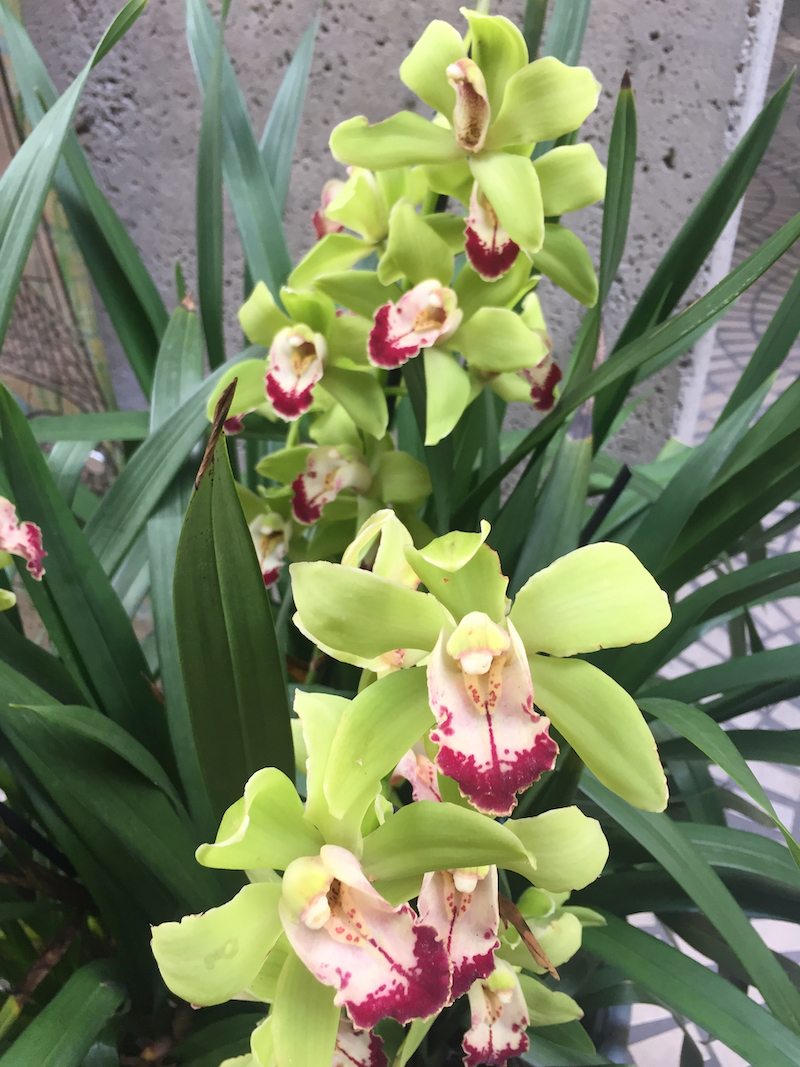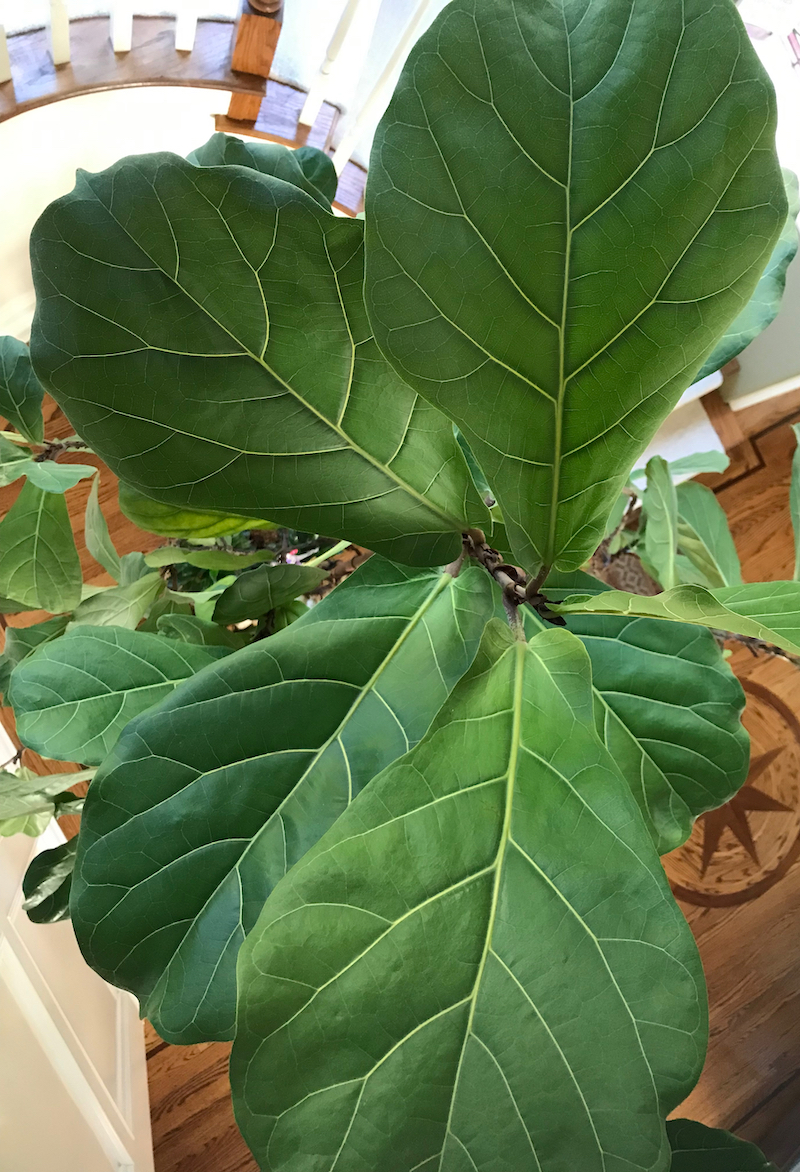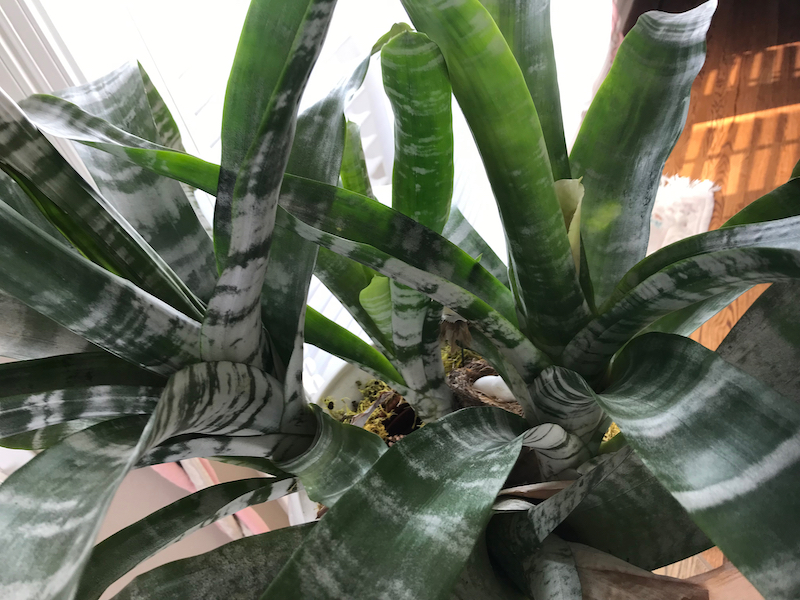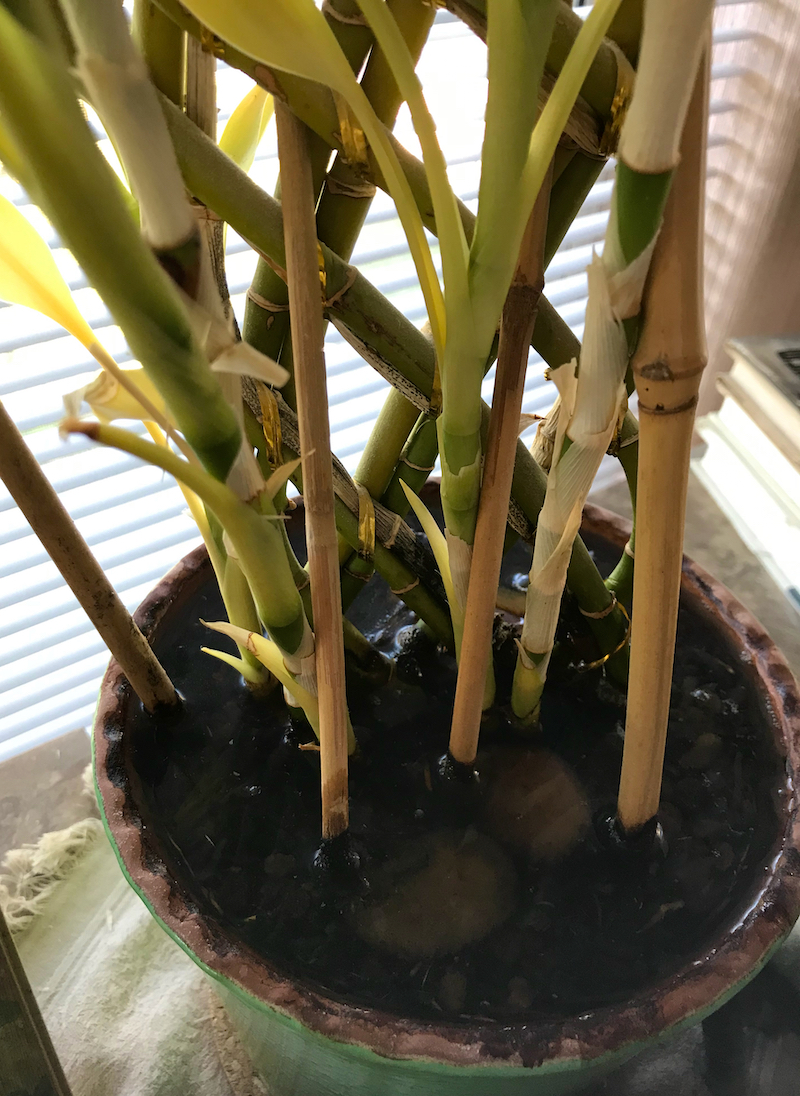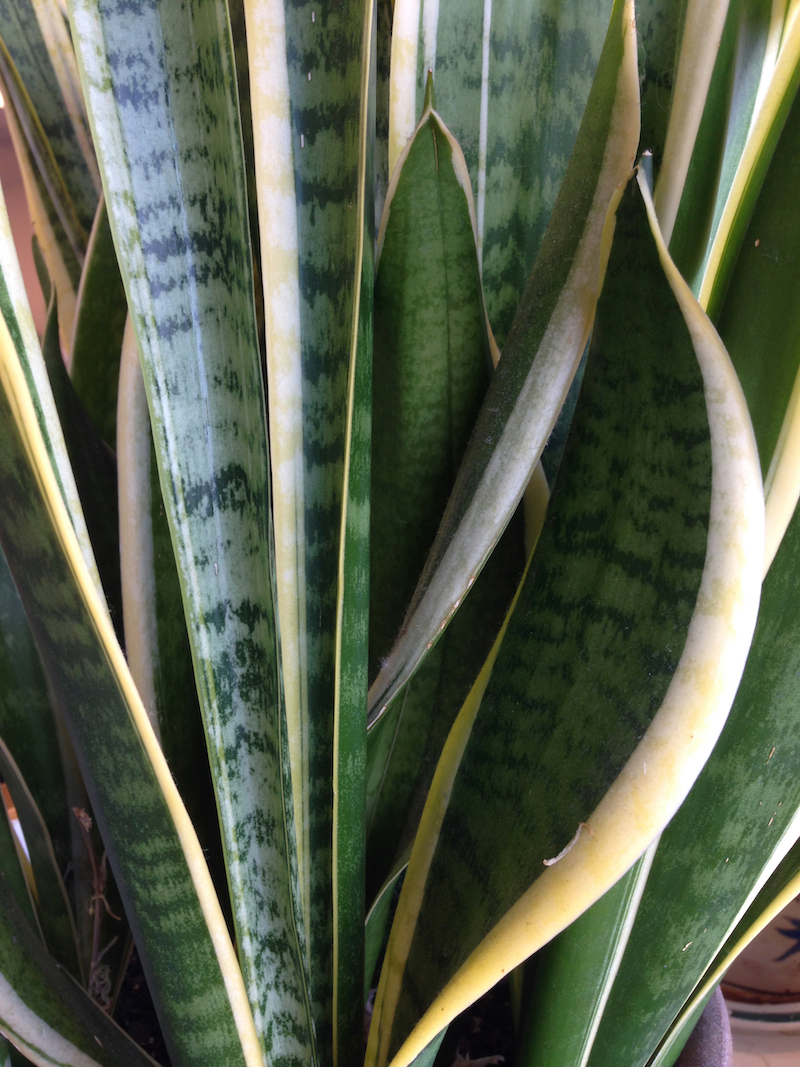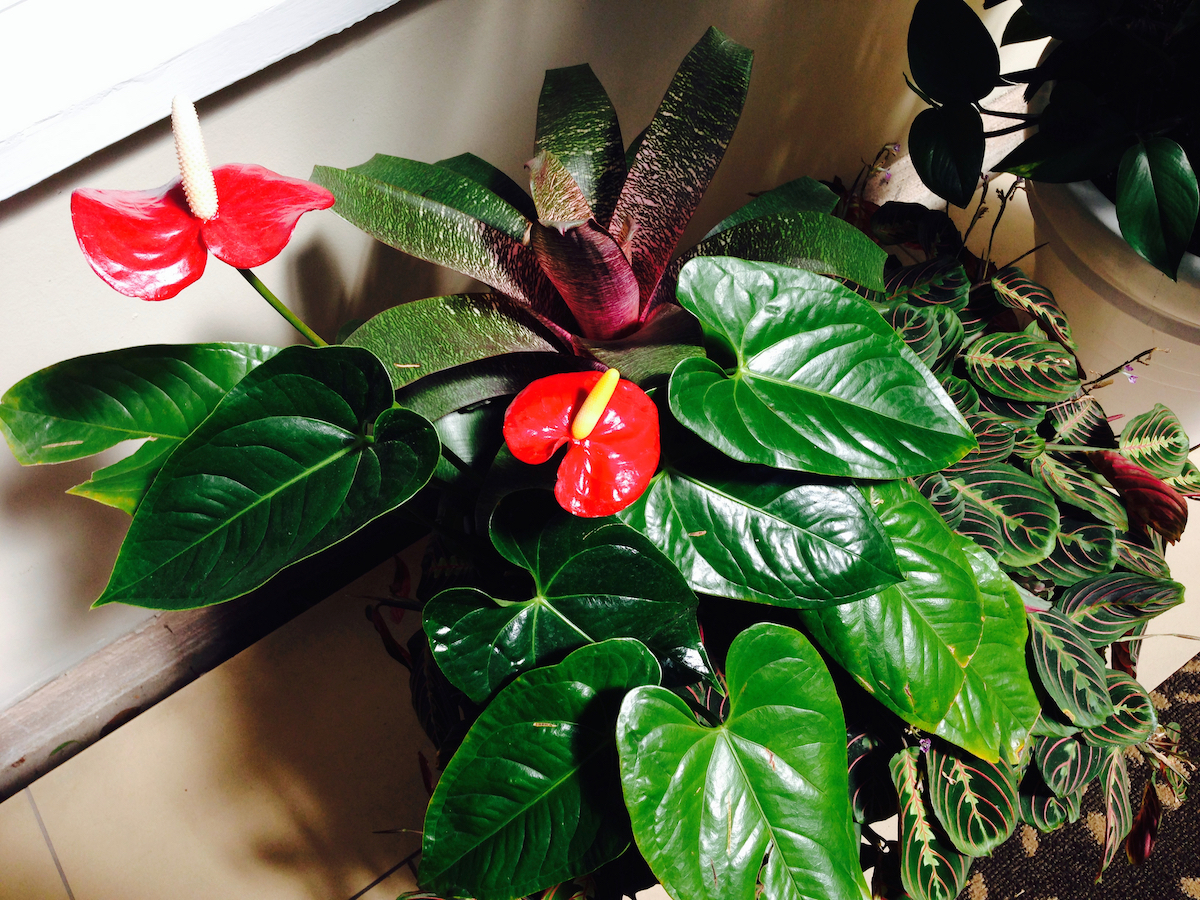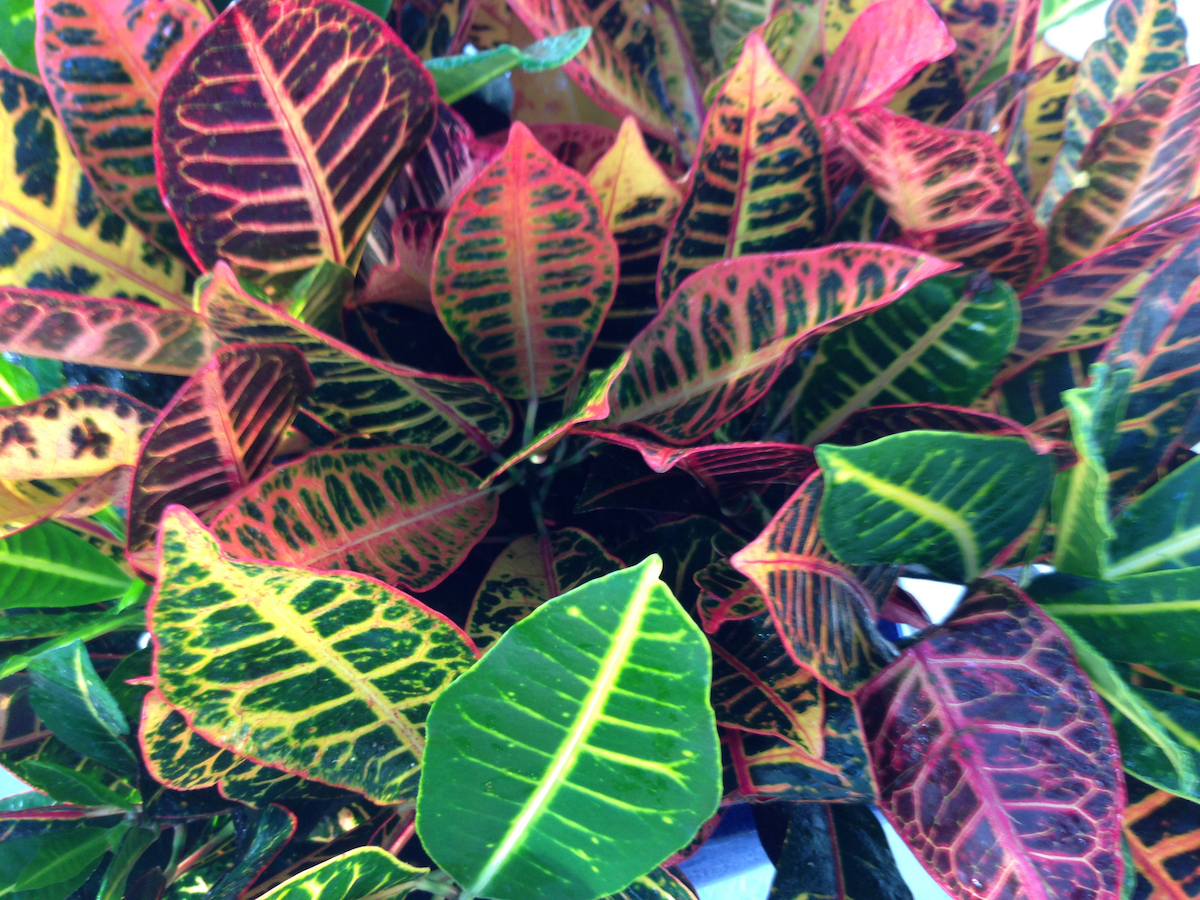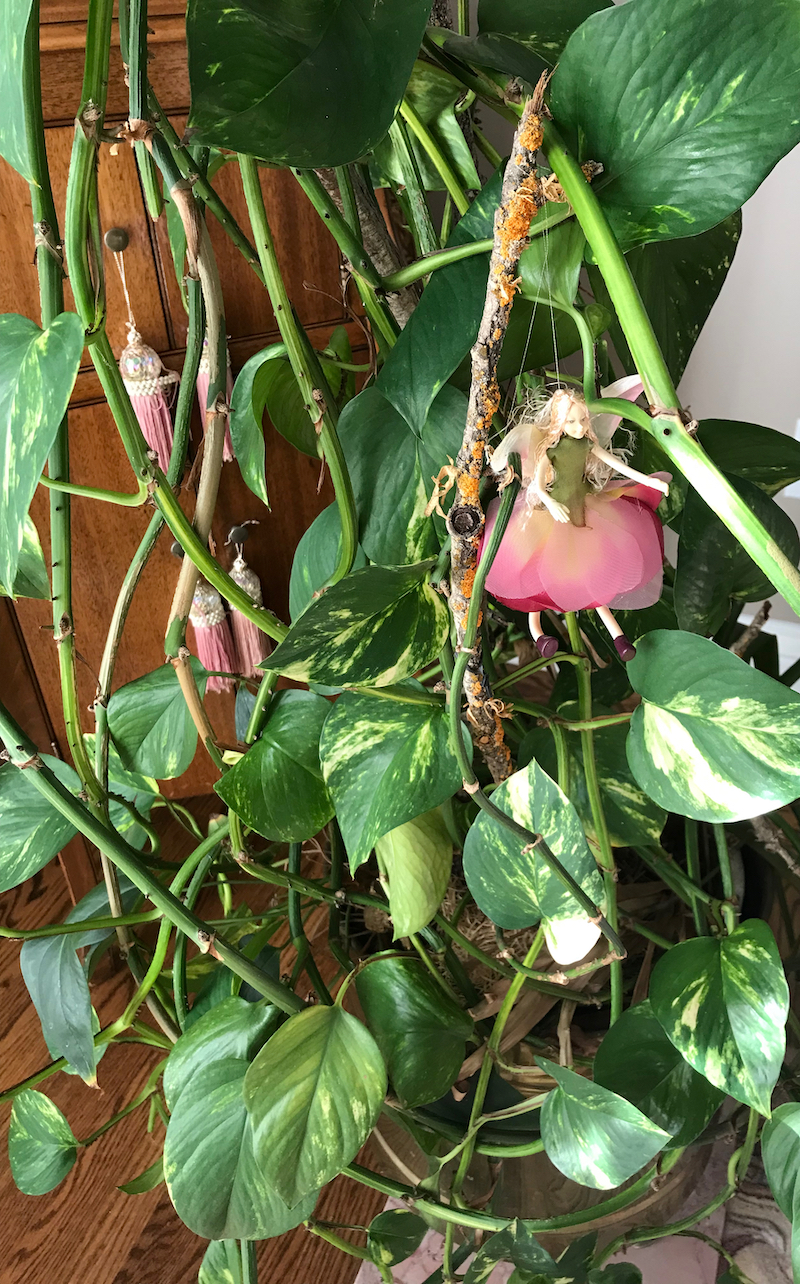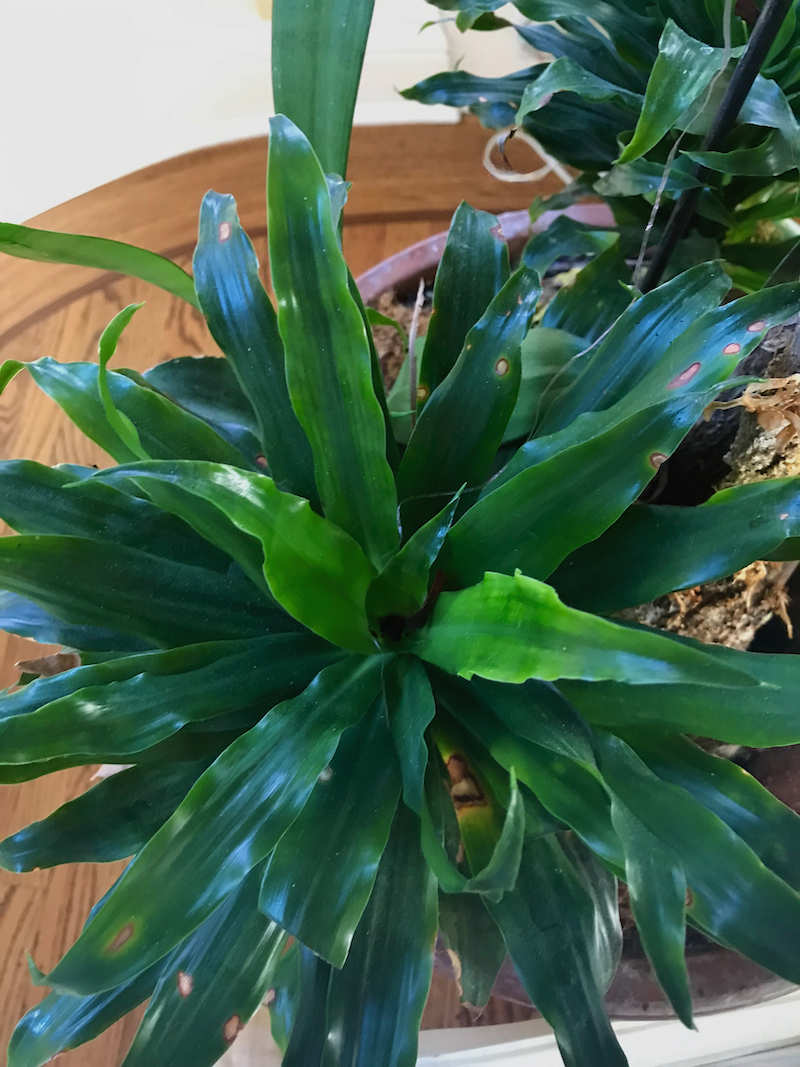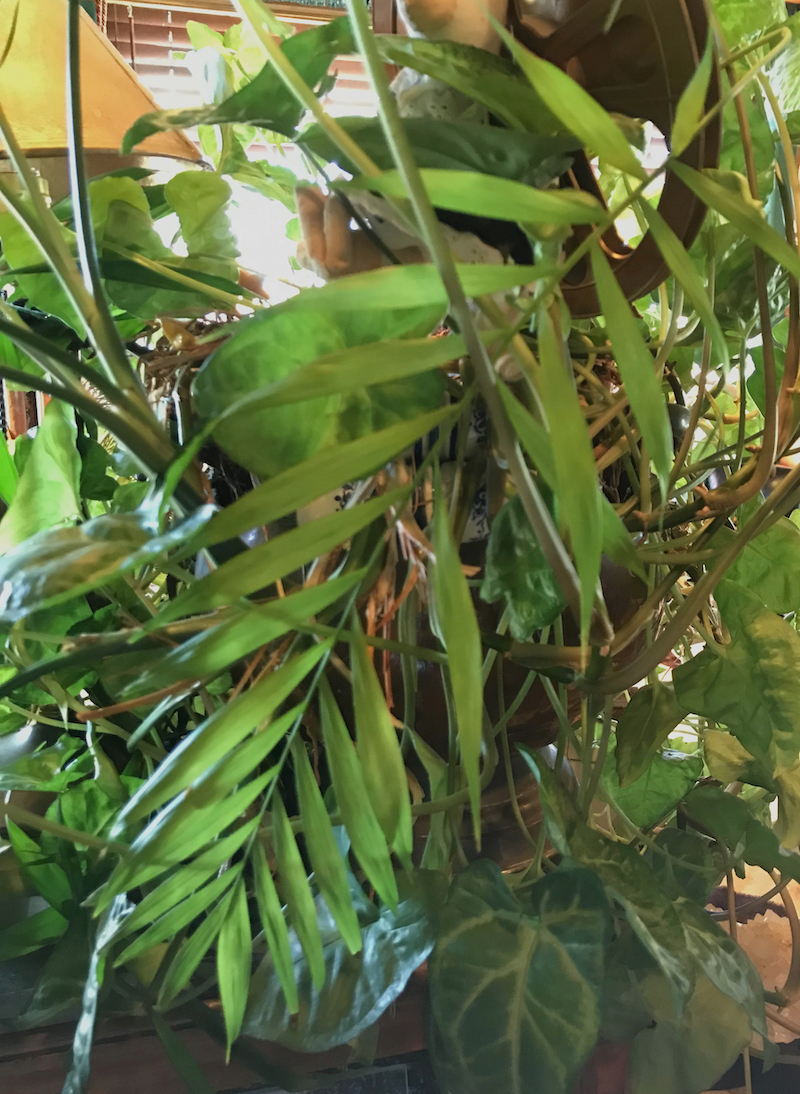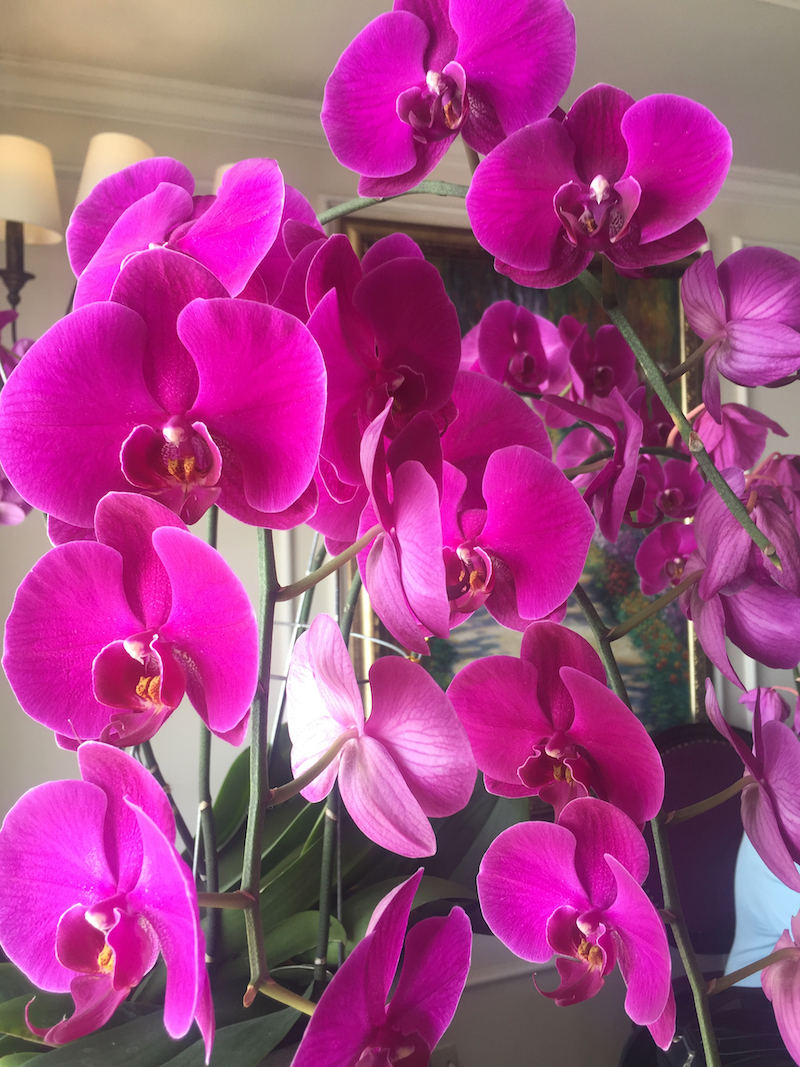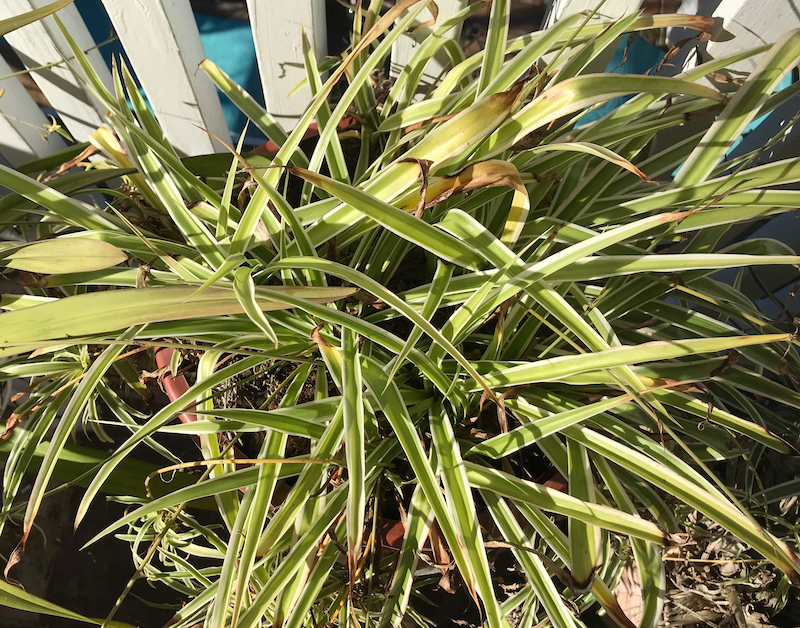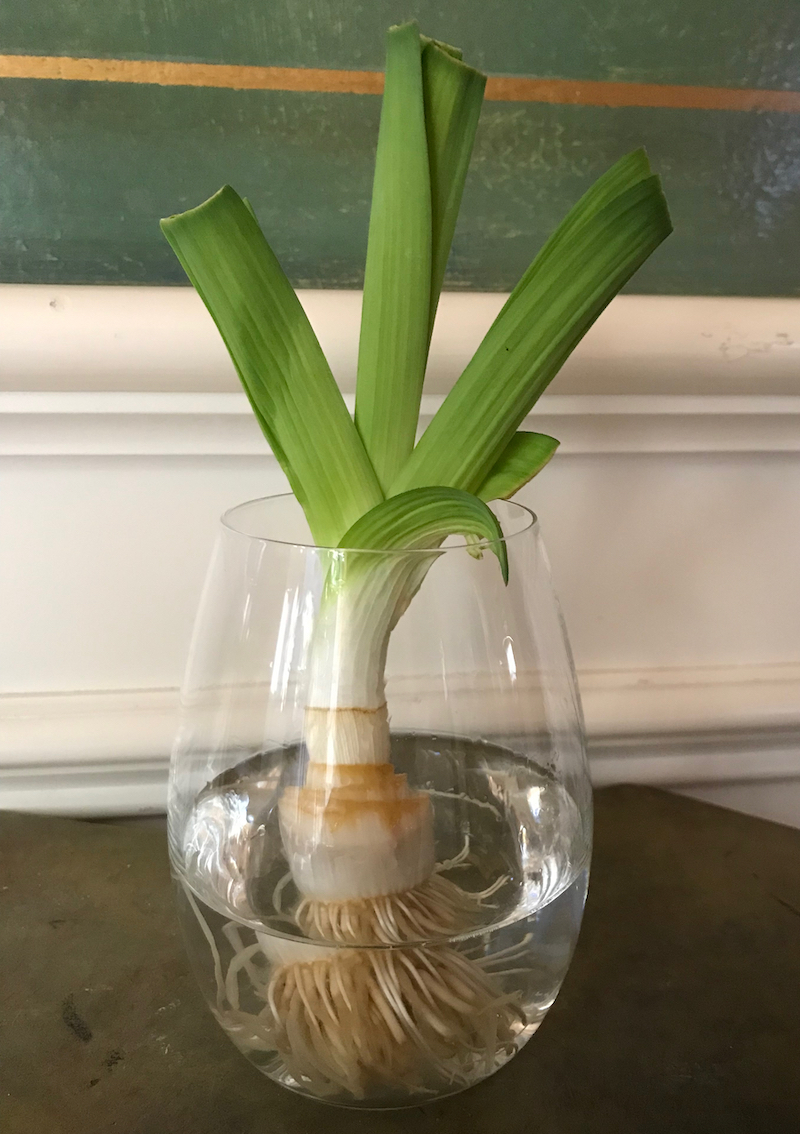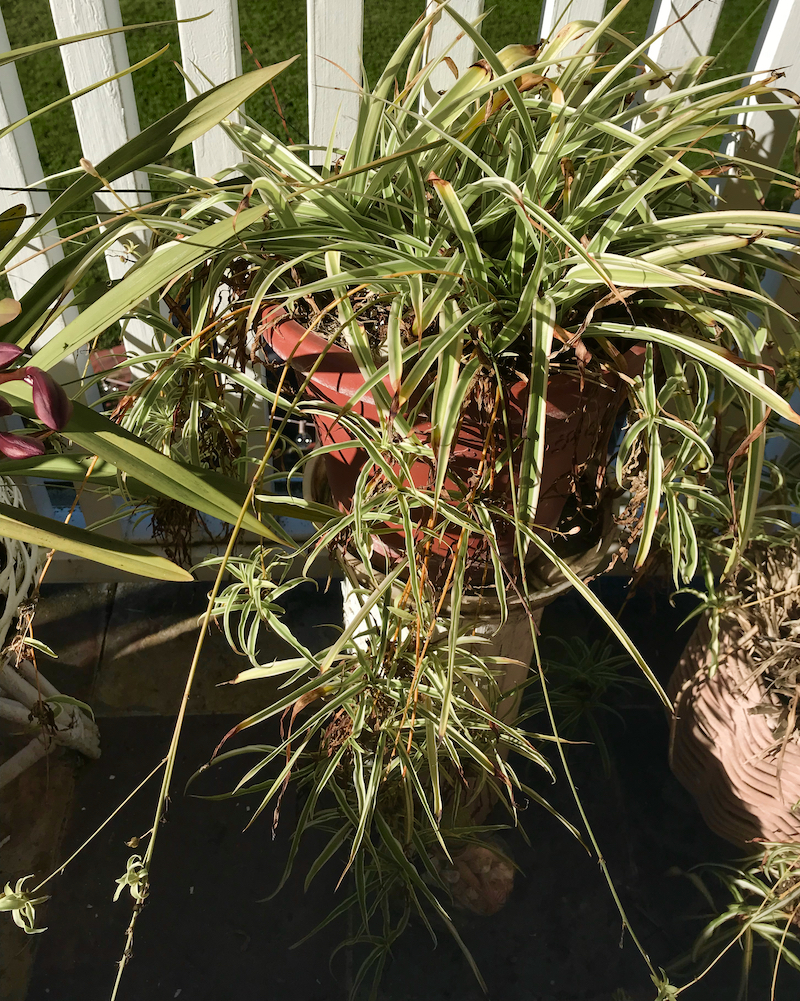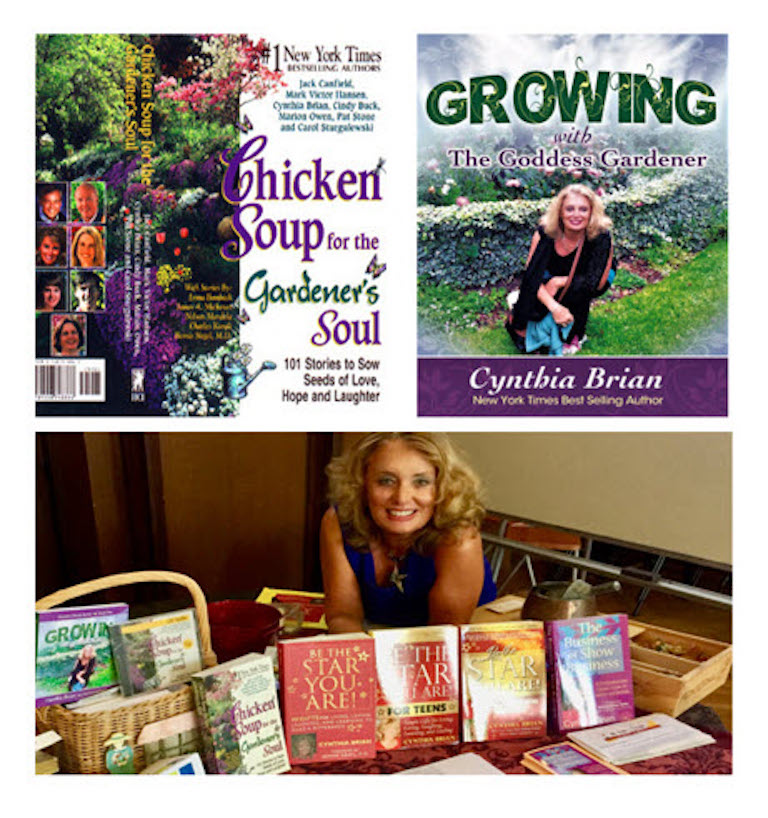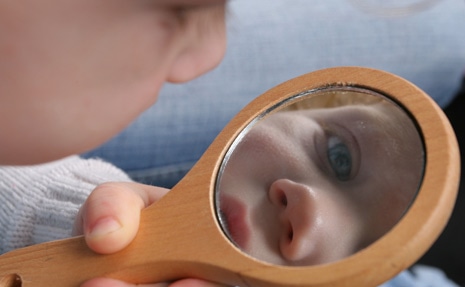“Having plants in your house is a natural way to continuously clear yourself!” Doreen Virtue
Forty-five! That’s the number of houseplants that filled my tiny dorm room on the 7th floor of Hedrick’s Hall during my freshman year at U.C.L.A. Every shelf, box, windowsill, wall hook, desk, and floor space were filled with a container sprouting something green. I had gone from being surrounded by nature on the farm to living in a high rise in the concrete jungle. My body, mind, and spirit craved a garden. I created an indoor oasis of easy-care houseplants that helped me breathe better in those days when Los Angeles was clogged with smog.
Eighteen! That’s the number of potted plants that currently grace my indoor space. The number doubles if you count containers on my porch and balcony. Most of my family of plants have been with me for decades. I have a fiddleleaf fig that began as a small specimen in a one-gallon pot that now towers to fifteen feet in my hall.
A precious peace lily that was gifted to me when Chicken Soup for the Gardener’s Soul hit the New York Times bestseller list currently inhabits a nine-square-foot corner of my family room. An original four-inch size variegated bromeliad birthed pups and is a focal flora in my living room.
My lucky bamboo growing in water peppered with pebbles soars three feet or more.
With winter keeping us from digging outside, indoor plants offer a way to garden in inclement weather while adding beauty to your interior décor. Even better than the attractiveness that plants bring to our designs, they are air-filtering workhorses as well. Air quality has become a big buzzword during the covid pandemic. Through the process of photosynthesis, plants convert the carbon dioxide we exhale and also remove gases from the air through a process called absorption. Back in 1989, a NASA report concluded that “household plants could provide a “promising economical solution to indoor air pollution.” A 2020 study published in the Journal of Environmental Management indicated that it would take a green wall to improve the health index of an interior environment. No matter which is truer, one thing is certain, being in nature as well as being surrounded by houseplants lowers our blood pressure, reduces stress, and improves mental health.
Numerous specimens that make excellent houseplants. A few of my favorites include orchids, bromeliads, aloe, peace lily, snake plant, spider plant, pothos, dracaena, croton, fiddleleaf fig, dieffenbachia, anthurium, parlor palm, arrowhead plant, and lucky bamboo. All of these are very easy-to-maintain, offer gorgeous greenery, and can live for years with minimal proper care.
To grow healthy, happy plants that will provide endless enjoyment and attractiveness, these elements are necessary.
1. Provide the correct amount of light.
Before you purchase any houseplant, look around your home for your light conditions. Some plants need bright light in a south window, others prefer the low light of a north-facing window. Some like it hot, some like it cool. Do your homework.
2. Water cautiously.
Many houseplants drown from over-watering. The lucky bamboo is one the rare specimen that thrives in water. Make sure that you have adequate drainage in all containers. Put gravel or small pebbles at the bottom of the pot. Poke a chopstick or pencil into the soil. If it comes out soggy, do not water. If it is dry, offer hydration to your plant friend. Plants may dry out more quickly in winter when forced air heaters are operating. Most plants may require water once a week or less.
3. Fertilize according to directions.
Stop feeding plants in the winter. Start again in the spring. Leafy green plants will need nitrogen, plants that flower want phosphorous.
4. Eradicate bugs.
Placing a clove of garlic in the soil is a great way to keep your friend bug-free. To kill bugs, place a clove of garlic in the soil. Mealybugs, aphids, and scale can be removed with a spray solution of water, alcohol, and dish detergent. The solution can also be rubbed on the leaves. Make sure to let the soil dry out if fungus gnats appear.
5. Maintain humidity.
Cacti enjoy dry conditions; however, most plants prefer 50% humidity. In winter, our homes tend to be drier. If containers can be lifted, add a saucer of pebbles filled with water to increase the humidity, or spray with a fine mist. Another idea is to take your plant into your bathroom or shower.
6. Trim spent blossoms and dead leaves.
When flowers are finished blooming, or leaves die, remove them as soon as possible to allow for new growth.
7. Other things.
Always read the instructions on care before making a purchase. Turn all houseplants a quarter turn at least once every two weeks to maintain their shape as most will reach for the sunlight. If you receive plants as gifts, make sure to remove wrapping to allow for good drainage. Living Christmas trees need to be moved outdoors. Depending on the size, you may be able to use the tree for next year’s holidays. Or you may need to transplant your tree into a larger container to keep on your patio. If you are going to plant it in the ground, determine the placement carefully as these trees will grow into very large evergreens with expansive roots.
One final interest of mine that is an educational and exciting experiment for children is rooting vegetables in a glass of water on a windowsill. Avocados, fennel, scallion, green onions, potatoes, sweet potatoes, and leeks grow quickly. Refresh the water daily. I currently am growing leeks and continue to use the green tops in my cooking.
With a little effort, your interiors will be healthier and more stunning with the introduction of living greens. Bring nature indoors with you while enjoying cleaner air living happily with your organic artistic housemates.
Happy Gardening. Happy Growing.
Photos and more:
Cynthia Brian, The Goddess Gardener, is available for hire to help you prepare for your spring garden. Raised in the vineyards of Napa County, Cynthia is a New York Times best-selling author, actor, radio personality, speaker, media and writing coach as well as the Founder and Executive Director of Be the Star You Are!® 501 c3. Tune into Cynthia’s StarStyle® Radio Broadcast at www.StarStyleRadio.com.
Buy copies of her books, including, Chicken Soup for the Gardener’s Soul, Growing with the Goddess Gardener, and Be the Star You Are! www.cynthiabrian.com/online-store. Receive a FREE inspirational music DVD and special savings.
Hire Cynthia for writing projects, garden consults, and inspirational lectures.
Cynthia@GoddessGardener.com


